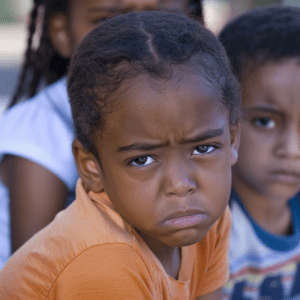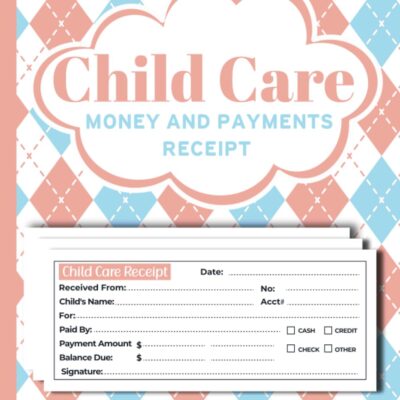
No child should be bullied, but when race becomes the reason behind Black children bullying, it can be even more damaging. Unfortunately, many Black children face bullying simply because of their skin color. This racial bullying doesn’t just harm them emotionally but can also affect their sense of identity, self-esteem, and overall well-being.
Racial bullying targets a person’s race, culture, or ethnicity, and for Black kids, this can mean dealing with cruel comments, exclusion, and even threats. This kind of bullying creates a harmful environment where Black children feel unsafe or unaccepted. So, why does this happen, and what can we do to stop it? Let’s dive in and explore how we can support Black kids facing racial torment and how we can create safer, more inclusive spaces for everyone.
What Does Racial Bullying Look Like?
Black racial bullying can take many forms, and often, it’s not just about physical attacks. It’s the cruel remarks, the exclusion from activities, or the constant feeling of being judged for your skin color. For Black kids, it can be as simple as someone making fun of their hair, skin tone, or the way they speak. It can also involve being called hurtful names or even being told they don’t belong because of their race.
One particularly harmful form of racial bullying is stereotyping. Black kids might hear things like, “You’re not like other Black people,” or, “Why are you acting so Black?” These types of comments may seem small but carry much weight. They send the message that there is something wrong with their race and force them to question their identity.
Exclusion is another form of bullying. Black kids might be left out of activities, groups, or friendships just because they don’t look like everyone else. This kind of bullying might not be as loud or obvious, but it’s excruciating and isolating.
Why Racial Bullying Hits Harder
Why does Black racial bullying hit so hard for Black kids? It’s because these attacks go deeper than typical bullying—they target a person’s identity, something they can’t change or hide. For a child, especially, it’s incredibly tough to deal with being mistreated just for being who they are.
Unlike general bullying, racial bullying is tied to the systemic racism that exists in society. Black children are often aware that the same prejudice they face at school also affects their families and communities in the outside world. This makes the bullying even more overwhelming because it doesn’t feel like something they can escape from.
Another reason racial bullying can be more harmful is that it’s often linked to historical oppression. The hurtful stereotypes and ideas behind the bullying are rooted in long-standing discrimination, which only adds to the emotional weight.
The Emotional Impact of Racial Bullying on Black Kids
The emotional toll of racial bullying on Black kids is severe. When a child is constantly tormented for their race, they can start to feel like they don’t belong or aren’t good enough. This could make you feel bad, angry, and isolation. Over time, these emotions can grow, leading to more significant problems like anxiety, depression, and even thoughts of self-harm.
When Black children experience bullying because of their race, it can also affect how they see themselves. They might question their identity or change how they look or act to fit in. This can be incredibly damaging because it forces them to suppress who they are.
Children who face racial bullying may also struggle academically. Focusing on schoolwork is hard when you’re constantly worried about being picked on. The stress from bullying can lead to lower grades, poor attendance, and an overall lack of interest in school.
Why We Need to Address Racial Bullying Early
The sooner we can address Black racial bullying, the better. If left unchecked, the effects of racial bullying can last long into adulthood. Early intervention is crucial for protecting Black children from the long-term consequences of being bullied because of their race.
By addressing racial bullying early, we can help children regain their confidence and self-worth. We can show them that they don’t have to tolerate this kind of behavior and that they deserve to be treated with respect. Early action also helps set a standard within schools and communities that racial bullying is not acceptable.
It is very important for parents, teachers, and other adults to recognizing the signs of racial bullying and stepping in to help. It’s essential to create an environment where children feel safe to talk about what they’re experiencing and know that adults will support them.
How to Help Black Kids Facing Racial Bullying
If you’re wondering how to stand up against racial bullying, here are some practical ways to help Black kids who are facing this kind of torment:
For Kids:
- Speak Up: Encourage kids to talk to a trusted adult if bullied. Let them know it’s not “snitching”—standing up for themselves and others.
- Support Each Other: Teach kids to be good friends by standing up for each other. If they see someone being bullied, they can offer support, like sitting with them or walking to class.
- Be Proud of Who You Are: Remind Black kids to take pride in their culture and heritage. Please encourage them to embrace what makes them unique instead of feeling pressured to change.
Parents:
- Talk to Your Child: Keep the lines of communication open. Ask your child how school is going and whether they’re having problems with classmates.
- Work with the School: If your child is being bullied, don’t hesitate to contact their teachers or school administrators. Schools should have policies in place to protect students from racial bullying.
- Teach Empowerment: Help your child understand that they have the right to be treated respectfully. Please encourage them to stand up for themselves and others, but also make sure they know when to seek help from adults.
Teachers:
- Create a Safe Space: Make your classroom a place where diversity is celebrated. Include books, lessons, and discussions that reflect the experiences of Black students.
- Intervene Quickly: Take immediate action if you see or hear about racial bullying. Tell students that racial bullying will not be tolerated in your classroom or school.
- Educate the Entire Class: Teach students about the importance of kindness, respect, and empathy. Anti-bullying programs that focus on inclusion can help reduce bullying based on race.
The Role of Schools in Stopping Racial Bullying
Schools have a huge responsibility to create a safe environment for all students. To stop racial bullying, schools need to be proactive in their approach. This means having clear policies against bullying and specifically addressing racial bullying.
Diversity and anti-bullying programs can be a great way to start. These programs teach students about different cultures and respecting everyone, regardless of race. Schools should also offer support systems for bullied students, such as counseling or peer support groups.
It’s also essential for teachers and staff to receive training on recognizing and handling racial bullying. Sometimes, subtle forms of bullying—like microaggressions—can be harder to spot, but they are just as harmful. Teachers should be trained to address these issues with sensitivity and care.
Knowing Your Legal Rights Against Racial Bullying
Many places have laws protecting children from being bullied because of their race. In the United States, for example, Title VI of the Civil Rights Act prohibits discrimination based on race, color, or national origin in schools receiving government funds. This means that the school is legally required to interfere if a Black child is bullied at school because of their race.
Parents should understand their child’s rights and, if required, advocate for their child‘s safety. If a school is not doing enough to prevent racial bullying, legal action may be taken to hold them accountable. The Anti-Defamation League and the Southern Poverty Law Center are two organizations that can offer legal assistance and resources to families suffering with racial bullying.
Creating a Culture of Inclusion and Respect
The final goal is to make a society where all children, no matter what race they are, feel valued and respected. It starts at home and spreads to schools and neighborhoods as well. We can help stop racial bullying before it starts by teaching kids to value and accept differences.
Communities can work together by holding workshops, talks, or events that help people understand and get along with each other. Schools can use lessons that honor the efforts of all racial groups and make sure that Black kids see themselves in what they learn.
Anybody should be dealt with amenably, respectably, and tenderly no matter what their tint. This is the most important thing we need to teach our children.
Conclusion
No kid must be exposed to harassing, especially because of their race. Black racial bullying is a serious issue that affects many Black children, but by raising awareness, standing up against it, and supporting those affected, we can make a real difference. It’s up to all of us—parents, teachers, students, and communities—to create environments where every child feels safe and valued. Let’s commit to stopping racial bullying and fostering a future where kindness and inclusion are the norms, not the exceptions.
If you want to learn my #1 DR. MORITZ Sugar-Free Calm Magnesium Gummies for Kids and Adults, Click Here Now





